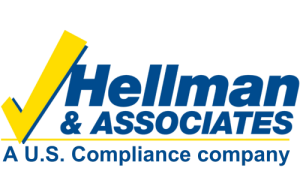In the event of a fire, the correct use of a portable fire extinguisher could mean the difference between suffering a minor loss and a major one. If fire extinguishers are provided for employee use in the work place, it’s critical that employees understand when and how to use them.
Fire Extinguisher Basics
- Fire extinguishers must be well maintained, adequately charged and readily accessible.
- Two types of inspections are required for extinguishers: 1) Monthly visual inspections (typically documented on the attached tag); and 2) Annual maintenance checks.
- Fire extinguishers must be accessible within 75-feet in the work area in general industry, and within 100-feet in construction.
- Fire extinguishers must be accessible within 50-feet of flammable liquids.
Fire Extinguisher Use
Do not attempt to fight a fire with a fire extinguisher unless:
- You have been trained to use a fire extinguisher correctly and feel comfortable using one.
- The fire is still in the incipient (beginning) stage. If the fire gets too large or out of control, evacuate.
- You know the type of combustible material burning. There are 5 classes of fires.
- Class A fires involve ordinary combustibles, such as paper, wood, cloth, rubber or plastics. Common extinguishing media includes water or dry chemical.
- Class B fires involve flammable liquids, greases or gases. Common extinguishing media includes foam, carbon dioxide or dry chemical.
- Class C fires involve live electrical equipment. Common extinguishing media includes CO2 or dry chemical. However, the actual burning product may belong to the Class A category.
- Class D fires involve combustible metals such as magnesium and sodium. Special extinguishing agents, approved by recognized testing laboratories, are needed when working with these materials.
- Class K fires involve cooking oils and greases. Special extinguishing agents, approved by recognized testing laboratories, are needed when working with these materials.
When using an extinguisher, remember the acronym P-A-S-S
- P – Pull. Pull the locking pin (usually attached with a zip tie) before using the fire extinguisher.
- A – Aim. Aim the fire extinguisher at the base of the fire. Not at the flames or smoke.
- S – Squeeze. Squeeze the lever of the fire extinguisher to operate and discharge.
- S – Sweep. Stand 8-10 ft. back and sweep the fire extinguisher back and forth at the base of the fire to extinguish, moving closer as it starts to diminish.
